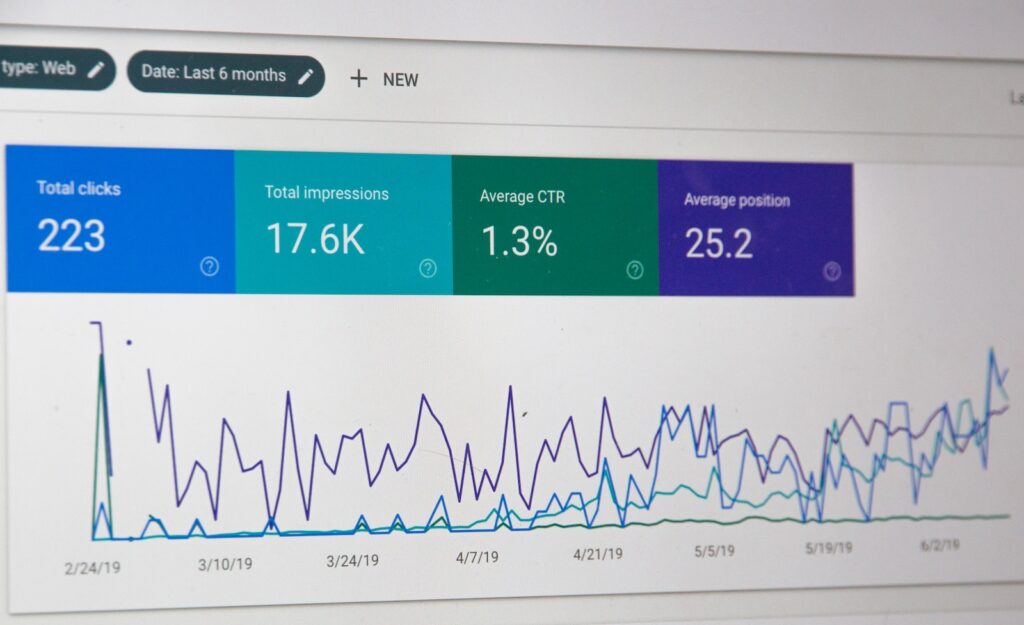How is Passive Income Taxed? At one point or another, the thought of earning money while you sleep has likely crossed your mind. The concept of passive income has gained tremendous popularity as more individuals aspire to achieve financial independence and freedom.
However, as with any source of income, taxation comes into play. In this comprehensive guide, we will explore the ins and outs of how passive income is taxed, shed light on the best forms of passive income, discuss tactics to increase your passive income, and provide valuable insights into the passive income strategies of the rich and millionaires.
What is Passive Income?
Before delving into the intricacies of taxation, let’s establish a clear understanding of what passive income actually is. Passive income refers to earnings derived from activities in which an individual does not actively participate on a regular basis.
Unlike active income, where you trade your time and effort for money, passive income enables you to generate revenue even when you are not directly involved in the income-generating activity. Examples of passive income include rental properties, dividend stocks, peer-to-peer lending, online businesses, and royalties from creative work.
The Benefits of Passive Income
Passive income offers several advantages that make it an appealing option for individuals seeking financial stability and long-term wealth accumulation. Understanding these benefits can provide the necessary motivation to embark on your passive income journey:
- Financial Freedom: Generating passive income allows you to break free from the constraints of relying solely on a traditional 9-to-5 job. You gain the ability to diversify your income streams, ensuring a more stable financial future.
- Flexibility: Passive income provides the flexibility to work on your own terms and schedule. As your income sources become more automated, you have the freedom to pursue hobbies, spend time with loved ones, and enjoy life outside the confines of a traditional work environment.
- Wealth Accumulation: By diligently investing and growing your passive income streams, you open the doors to building wealth over time. This wealth accumulation can help you achieve your long-term financial goals and secure a comfortable retirement.
Now that we understand the benefits of passive income, let’s explore the best forms of passive income that you can pursue to start building your wealth.
Best Forms of Passive Income
1. Real Estate Investing
Real estate has long been considered a prime avenue for generating passive income. From rental properties to real estate investment trusts (REITs), there are various ways to profit from this lucrative market. By owning rental properties, you can earn monthly rental income, take advantage of tax benefits, and potentially appreciate the value of your property over time. Alternatively, investing in REITs allows you to indirectly invest in real estate without the challenges of property management.
2. Dividend Stocks
Dividend stocks are shares of companies that distribute a portion of their profits to shareholders on a regular basis. By investing in these stocks, you can receive dividend payments, providing a steady stream of passive income. Dividend stocks are an attractive option for long-term investors seeking both income and potential share price appreciation.
3. Peer-to-Peer Lending
Peer-to-peer lending platforms have revolutionized the lending industry, offering individuals the opportunity to invest in loans and earn interest. By acting as a lender, you can provide funding to borrowers while earning passive income in the form of interest payments. P2P lending platforms provide a convenient avenue for diversifying your passive income streams.
4. Creating and Selling Digital Products
In the digital age, creating and selling digital products has become a highly profitable passive income stream. Whether it’s ebooks, online courses, stock photos, or software, digital products can be created once and sold repeatedly, generating revenue without continuous effort. This form of passive income leverages your expertise and online platforms to reach a wide audience.
5. Affiliate Marketing
Affiliate marketing involves promoting and recommending other people’s products or services in exchange for a commission. By joining affiliate programs and incorporating affiliate links into your content, you can earn passive income whenever someone makes a purchase through your unique referral link. This strategy is widely used by bloggers, influencers, and content creators to monetize their online presence.
By diversifying your income streams and incorporating a combination of these passive income methods, you can create a robust foundation for generating long-term wealth. But how can you effectively increase your passive income and accelerate your journey to financial independence? Let’s explore some practical strategies.
How to Increase Passive Income
Achieving financial freedom through passive income requires continuous effort, learning, and adaptation. Consider the following tactics to boost your passive income streams:
Diversify Your Income Streams
Relying solely on a single passive income source can be risky. Instead, diversify your income streams by investing in multiple avenues such as real estate, dividend stocks, and online businesses. This diversification minimizes the impact of potential setbacks in any one particular income source.
Invest in Education and Personal Development
Expanding your knowledge and skillset is crucial to increasing your earning potential in the world of passive income. Invest in your education by attending courses, reading books, and seeking mentorship from successful passive income earners. By staying up-to-date with industry trends and strategies, you can maximize your passive income opportunities.
Automate and Streamline Processes
One of the key advantages of passive income is its ability to generate money with minimal ongoing effort. Embrace automation and streamline your business processes to reduce the amount of time and energy required to maintain and grow your passive income streams. Utilize technology, outsourcing, and automation tools to rid yourself of repetitive tasks, freeing up time for strategic decision-making and expansion.
Leverage Tax Strategies for Passive Income
Proper tax planning is essential to optimizing your passive income. Consult a tax professional to ensure you are taking advantage of available deductions, credits, and tax-efficient investment vehicles. Implementing tax strategies specific to passive income can help you minimize your tax liability while maximizing your profits.
Now that we’ve discussed ways to strengthen your passive income, let’s dive into the taxation of passive income and understand how it is affected by various tax regulations.
Taxation of Passive Income
When it comes to taxation, it’s important to grasp the different types of income tax that may apply to your passive income. Here are the key considerations:
Understanding the Different Types of Income Tax
- Capital Gains Tax: This tax is levied on the profits generated from selling capital assets, such as real estate or stocks, at a higher price than their cost basis. The rate of capital gains tax varies depending on your income and the duration of time you held the asset.
- Ordinary Income Tax: Ordinary income tax applies to the earnings you receive from rental income, interest income, and business income. The rates for ordinary income tax are determined by your tax bracket, with higher income earners generally subject to higher tax rates.
- Self-employment Tax: If you are actively involved in a business that generates passive income, you may be subject to self-employment tax. This tax is designed to cover Social Security and Medicare taxes for self-employed individuals and is calculated based on a percentage of your net self-employment income.
- Net Investment Income Tax (NIIT): The Net Investment Income Tax is an additional tax imposed on individuals with significant passive income. This tax applies to individuals whose modified adjusted gross income exceeds certain thresholds. The current rate for NIIT is 3.8% on net investment income.
Tax Deductions for Passive Income
To mitigate the impact of taxation on your passive income, it’s essential to leverage available tax deductions. Here are some common deductions that may apply to your passive income:
- Mortgage Interest: If you own rental properties, you can deduct the interest paid on your mortgage from your rental income, reducing your taxable passive income.
- Depreciation: You may be able to depreciate the value of your rental property or other income-generating assets over time, allowing for deductions that offset your taxable income.
- Operating Expenses: Business-related expenses such as repairs, maintenance, advertising, and professional services can be deducted from your passive income, reducing your tax liability.
- Employee Benefit Programs: If you run a small business generating passive income, you can potentially deduct contributions to employee benefit programs like retirement plans or health insurance.
Tax Strategies for Minimizing Passive Income Taxation
To optimize your tax situation and minimize the impact of passive income taxation, consider the following strategies:
- Pass-through Entities: Structuring your business as a pass-through entity, such as a limited liability company (LLC) or S corporation, may provide tax advantages by allowing the income to pass through to your personal tax return.
- 1031 Exchanges: In real estate investing, utilizing a 1031 exchange can defer capital gains tax when selling a property by reinvesting the proceeds in a similar property.
- Tax-Advantaged Retirement Accounts: Contributing to tax-advantaged retirement accounts like a traditional IRA or a 401(k) can reduce your taxable income while simultaneously building your retirement nest egg.
- Charitable Contributions: By donating a portion of your passive income to charitable organizations, you can both support causes you care about and potentially reduce your tax obligations through charitable deductions.
Understanding the complex world of passive income taxation is essential for optimizing your financial position. Now, let’s explore the passive income strategies of the rich and millionaires, gaining valuable insights into how they earn and manage their wealth.
Passive Income of the Rich and Millionaires
Studying successful individuals who have achieved significant passive income can provide invaluable lessons and inspiration for your own financial journey. Here are some insights into the passive income strategies employed by the rich and millionaires:
- Learning from Successful Passive Income Examples: Researching and understanding real-life examples of successful passive income earners can offer valuable guidance. Explore case studies of individuals who have reached financial independence through passive income and adapt their strategies to suit your circumstances.
- Insights into the Wealthy’s Passive Income Strategies: Analyzing the methods employed by the wealthy can shed light on their approaches to generating and managing passive income. From real estate investments to business ventures, unravel the secrets of how they turn their money into an income-generating machine.
- Applying Their Techniques to Boost Your Passive Income: Understanding the passive income strategies of the rich and millionaires is essential, but it’s equally crucial to translate those insights into actionable steps for yourself. Adapt their techniques, tailor them to your own financial goals, and consistently implement them to boost your passive income.
By adopting a mindset of continual learning and implementing strategic tactics, you can amplify your passive income and accelerate your path to financial independence.
Conclusion
In conclusion, passive income offers a pathway to financial freedom and long-term wealth accumulation. While taxation plays a role in the world of passive income, strategic planning and implementation of effective tax strategies can help mitigate its impact. By diversifying your income streams, investing in education and personal development, leveraging automation, and understanding the various types of income tax, you can optimize your passive income and maximize your financial gains.
Remember, passive income is not a magical solution but rather an avenue that requires effort, dedication, and continuous adaptation. By incorporating the lessons learned from the rich and millionaires, you can elevate your passive income to new heights. Take action today and begin your journey toward financial independence through passive income.
Disclaimer: This blog post is for informational purposes only and should not be considered financial or tax advice. Consult with a qualified professional regarding your specific circumstances.
References:
- Real Estate Investing: Beginner’s Guide to Real Estate Investing
- Affiliate Marketing: The Beginner’s Guide to Affiliate Marketing
- IRS: Passive Activity and At-Risk Rules
- Investopedia: Taxes on Passive Income





